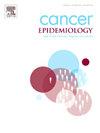1990-2019年职业致癌物导致的全球、区域和国家肺癌负担:基于GBD 2019的趋势、不平等和预测研究
IF 2.4
3区 医学
Q3 ONCOLOGY
引用次数: 0
摘要
背景:肺癌是癌症相关死亡的主要原因,其受职业致癌物的影响显著。本研究旨在评估和预测由职业致癌物引起的肺癌负担的全球、区域和国家趋势。方法:从2019年全球疾病负担研究中获得9种职业致癌物导致的肺癌负担数据。根据社会人口指数(SDI)对地区进行分类。采用描述性统计、连接点回归和年龄-时期-队列(APC)模型分析死亡率和残疾调整生命年(DALYs)的趋势。利用不平等斜率指数和浓度指数对健康不平等进行量化。开发了ARIMA-LSTM模型来预测2020年至2030年的负担。结果:1990-2019年,职业致癌物导致的肺癌死亡人数和DALYs增加。全球年龄标准化死亡率(ASMR)和DALY (ASDR)率下降,而中低SDI地区上升。联合点回归和APC分析显示,低SDI地区的局部漂移效应、周期效应和队列效应呈现出越来越不利的趋势,而高SDI地区的局部漂移效应、周期效应和队列效应呈下降趋势。相反,年龄效应在所有SDI地区都相似地增加。卫生不平等现象随着时间的推移而恶化。ARIMA-LSTM模式显示,2020 - 2030年全球ASMR和ASDR将下降,而低、中、低SDI地区预计将大幅增加。结论:职业致癌物导致的肺癌负担健康不平等仍然是一个关键问题,强调迫切需要针对中低SDI地区制定有针对性的职业卫生政策。本文章由计算机程序翻译,如有差异,请以英文原文为准。
Global, regional and national burden of lung cancer attributable to occupational carcinogens, 1990–2019: A study of trends, inequalities and predictions based on GBD 2019
Background
Lung cancer, a leading cause of cancer-related mortality, is significantly influenced by occupational carcinogens. This study aimed to assess and predict global, regional and national trends of lung cancer burden attributable to occupational carcinogens.
Methods
Data on the lung cancer burden attributable to nine occupational carcinogens were obtained from the Global Burden of Disease Study 2019. Regions were categorized by the Socio-Demographic Index (SDI). Descriptive statistics, Joinpoint regression, and Age-Period-Cohort (APC) models were employed to analyze trends in mortality and Disability-Adjusted Life Years (DALYs). Using the Slope Index of Inequality and Concentration Index, health inequalities were quantified. The ARIMA-LSTM model was developed to predict the burden from 2020 to 2030.
Results
From 1990–2019, lung cancer deaths and DALYs due to occupational carcinogens increased. Global age-standardized mortality (ASMR) and DALY (ASDR) rates declined, while middle and lower SDI regions increased. Joinpoint regression and APC analysis revealed that the local drift, period, and cohort effects exhibited increasingly unfavorable trends in lower SDI regions, while they were decreasing trends in higher SDI regions. Conversely, age effects increased similarly across all SDI regions. Health inequalities worsened over time. The ARIMA-LSTM model demonstrated global ASMR and ASDR would decrease, while low-middle and low SDI regions were expected to experience substantial increases from 2020 to 2030.
Conclusion
Health inequality of lung cancer burden attributable to occupational carcinogens remained a critical concern, underscoring the urgent need for targeted occupational health policies for low and low-middle SDI regions.
求助全文
通过发布文献求助,成功后即可免费获取论文全文。
去求助
来源期刊

Cancer Epidemiology
医学-肿瘤学
CiteScore
4.50
自引率
3.80%
发文量
200
审稿时长
39 days
期刊介绍:
Cancer Epidemiology is dedicated to increasing understanding about cancer causes, prevention and control. The scope of the journal embraces all aspects of cancer epidemiology including:
• Descriptive epidemiology
• Studies of risk factors for disease initiation, development and prognosis
• Screening and early detection
• Prevention and control
• Methodological issues
The journal publishes original research articles (full length and short reports), systematic reviews and meta-analyses, editorials, commentaries and letters to the editor commenting on previously published research.
 求助内容:
求助内容: 应助结果提醒方式:
应助结果提醒方式:


